The drive through Death Valley National Park was yet another highlight along the route of our South West US road trip.
In complete contrast to the majestic granite cliffs, verdant pines and babbling streams of Yosemite, Death Valley possesses a sun-bleached grandeur, and desolate sense of vastness. There really is nowhere else like it on earth.
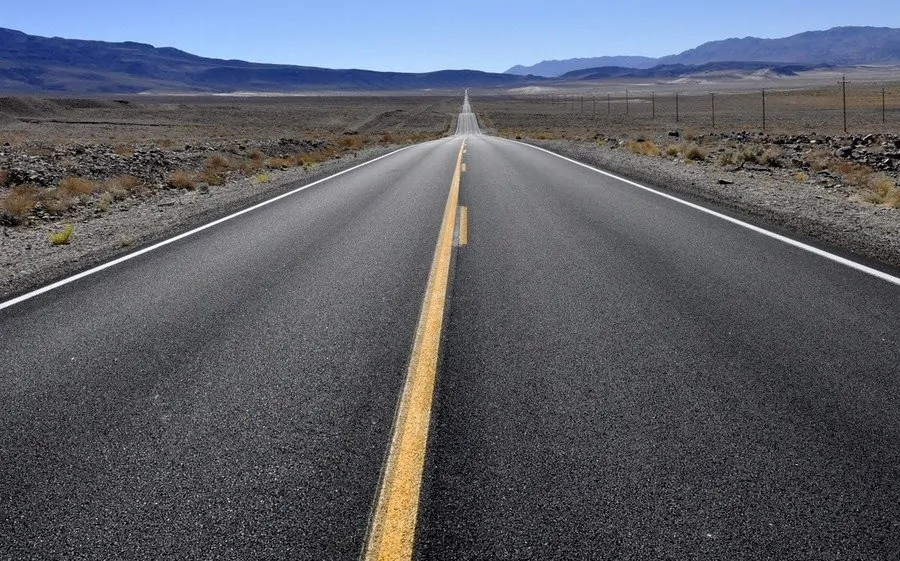
How Hot is Death Valley?
Death Valley also sounds kind of scary, maybe it’s just the name, but we did approach the drive with some trepidation.
We’d heard snippets in Monterey, as we waited to go whale watching, from other people who had driven it. Comments like ‘the tire pressure went up so much we thought they were going to burst’ and ‘you’ll need to turn the air-con off so the engine doesn’t overheat’ didn’t inspire confidence.
Neither did the fact that the highest ever temperature on earth of 134°F was recorded at Furness Creek in Death Valley in July 1913. On our drive through Death Valley temperatures reached a mere 108°F…

Tips for Driving Death Valley
We filled the car with fuel and we filled ourselves with a massive breakfast of eggs and hash browns, oddly with a slice of watermelon garnishing the plate.
We stocked the cooler box with ice and bottled water, slapped on the suncream and studied our trusty paper map – GPS and mobile signals aren’t reliable in the desert.
Leaving Lone Pine, where we’d stayed overnight, we turned onto heat-hazed route 190, a scenic byway, which seemed to stretch into infinity and we entered the furnace of Death Valley.
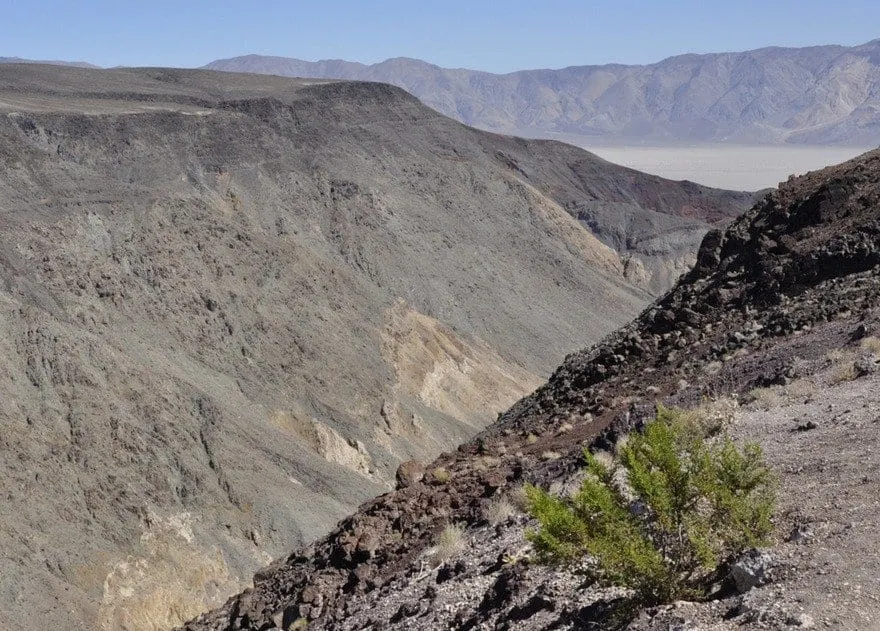
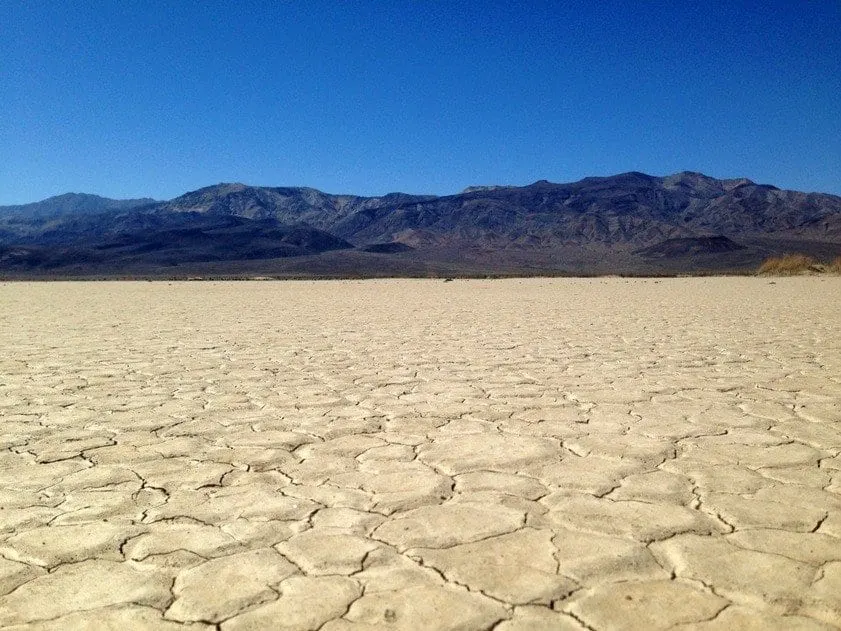
Death Valley is an area of 13,518 km² where the earth’s crust which has sunk leaving a flat basin. It lies partly in California and partly in Nevada, USA.
You might think it’s one huge expanse of heat-scorched landscape and barren emptiness framed by craggy mountains. And yes, there are areas of parched, cracked earth but on taking a closer look you’ll find so much more.
There are mirrors of sparkling white salt deposits, multi-coloured lava formations and vivid rust and orchre striations in the rock face. Splashes of green where small shrubs and plants thrive prove that there’s moisture found in the valley.
There’s history in Death Valley too; remnants of the life led by pioneers, prospectors and the borax miners.

Mustard Canyon, Death Valley
Mustard Canyon, which is just north of Furnace Creek, (where we hit 106°F) is worth a stop to view the ochre rock formations and the nearby ruins of the Harmony Borax Mine.
The heat hit us full on as we made our way up the hill to the old mine and the wagon cart once pulled by a twenty mule team. It was unimaginable to think that people worked the mines in this heat. Borax, known as ‘white gold of the desert’ was the most profitable mineral to come out of Death Valley.

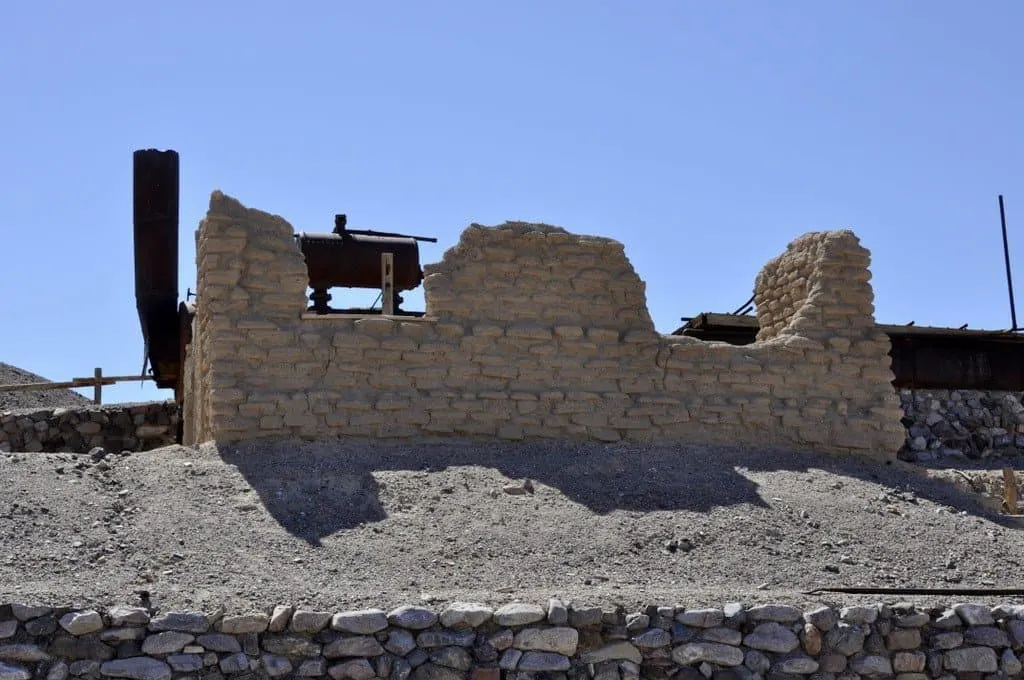
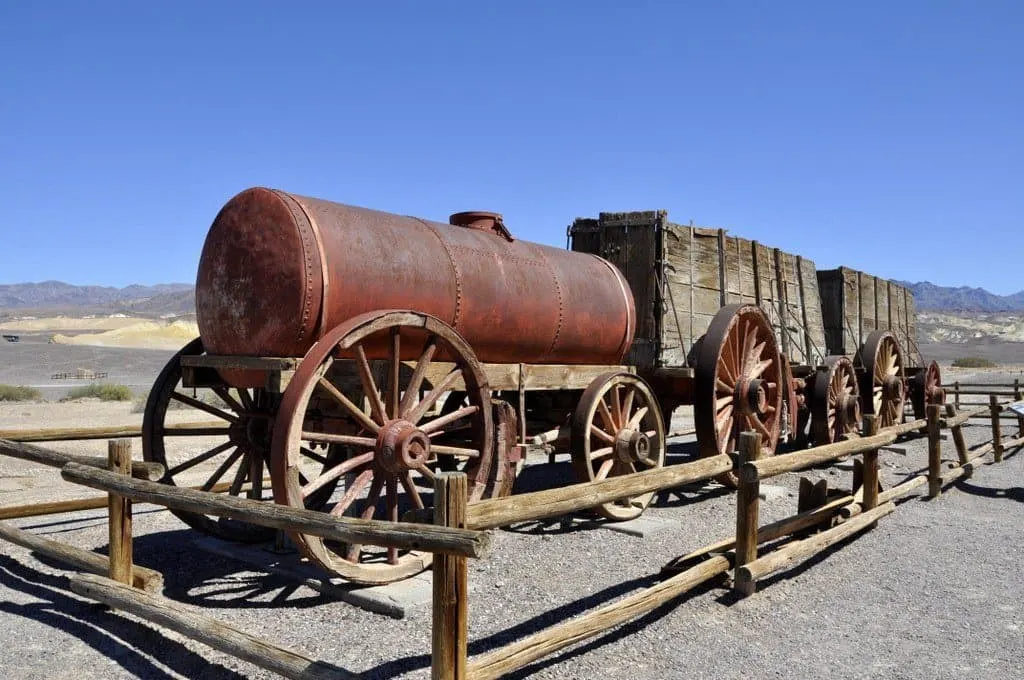
We planned our route through the valley to take in some of the highlights – just a few. It’s a huge place and although some of the attractions are close to each other some are only accessible by rough roads which zig-zag across the valley’s peaks which means although somewhere is only 10k away it could take an hour to get there.
Death Valley Lows
Badwater Basin is the lowest point in the U.S. The vertical drop from the top to the floor of Badwater Basin is twice the depth of the Grand Canyon at 282 feet below sea level.
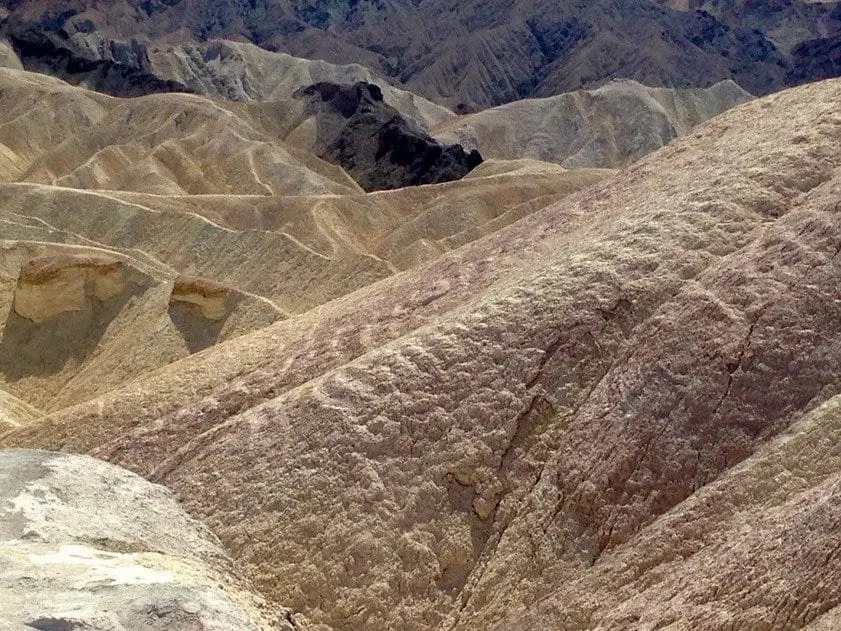
By far the most spectacular landscape we saw was Zabrinskie Point with the view of The Badlands and its pastel pink and yellow tinted rock formations. It reminded me of Rainbow Vista in Valley of Fire state park, Nevada.
Zabriskie Point is part of Amargosa Range well known for it’s eroded landscape. It’s made up of sediment from Furnace Creek Lake, which dried up millions of years before Death Valley came into existence.
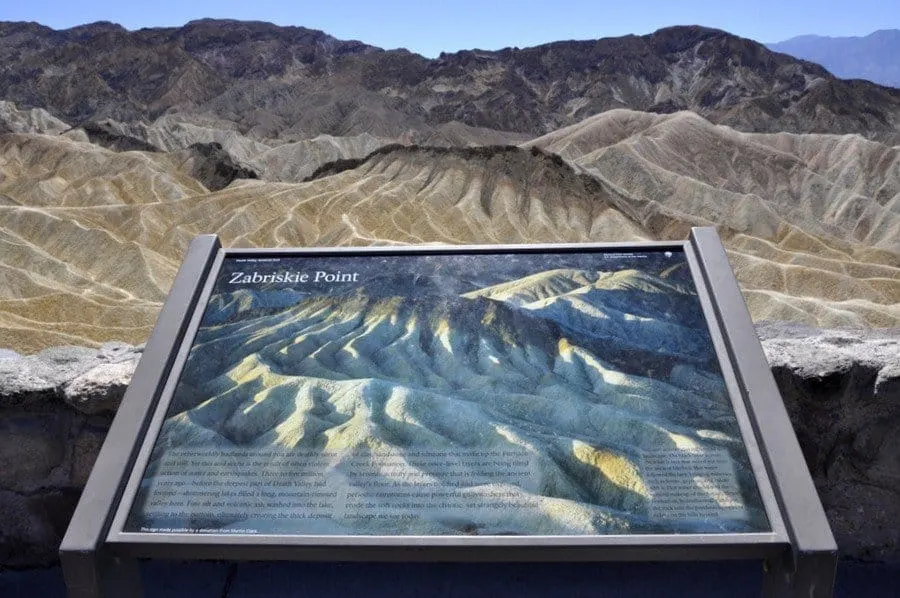
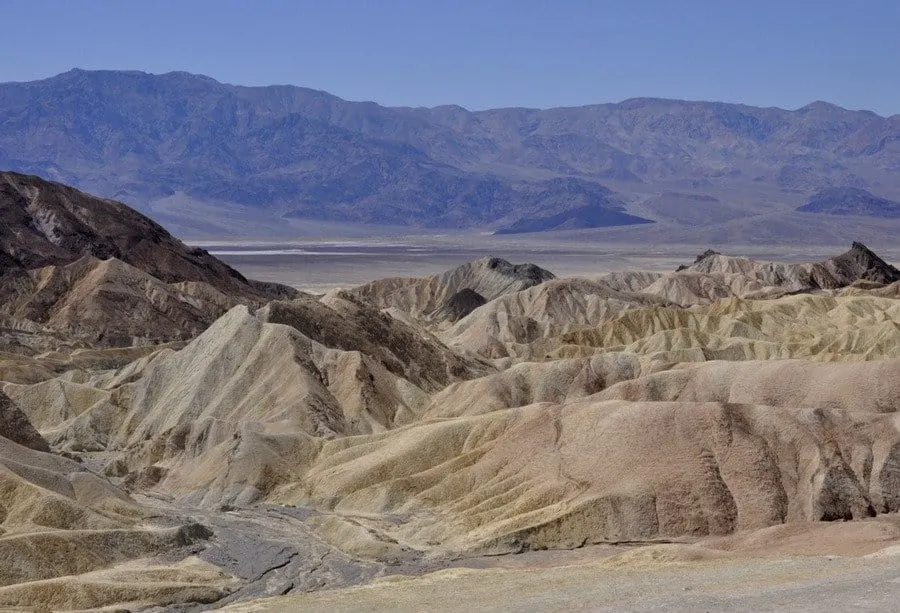
Zabriskie Point was our last stop in Death Valley. After our first road trip week of exploring San Francisco and California’s wildlife in Monterey and Yosemite it was time to head back to the city. This time, the neon lights of Las Vegas were calling us…
Pin it for later…
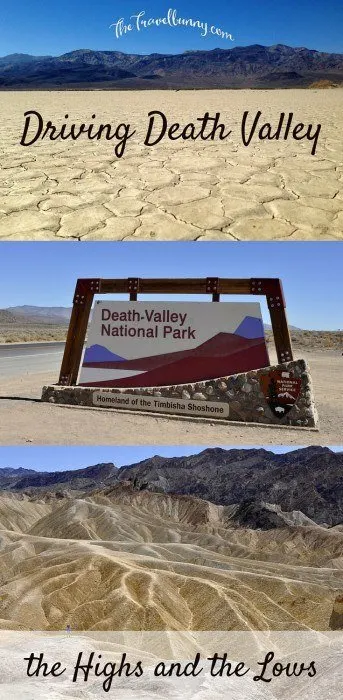

Suzanne Jones is a full-time travel blogger and writer at The Travelbunny website which she started in 2011 during her time as a professional travel planner. This serial traveller enjoys exploring new destinations, culinary encounters and the outdoors. When she’s not indulging her wanderlust or writing about her adventures you’ll most likely find Suzanne, camera in hand, enjoying coastal walks on England’s South Coast.
Suzanne also runs Hello Sussex a website which showcases the best of East & West Sussex. Read more about Suzanne here…

Judith mcdonald
Sunday 11th of July 2021
Driving through the desert with classical music playing quietly......then, watching a thunder storm approach. HEAVEN!
Suzanne Jones
Sunday 11th of July 2021
I can only imagine... It was blazing hot when we drove through without a cloud in the sky!
Dennis Boyce
Saturday 22nd of February 2020
Is there any way I could use the image of the road for a sermon series I am preaching?
Thank you!
Liam Payne
Sunday 7th of February 2021
First visit was February 2020. Peaceful and quiet - the complete absence of noise was the most memorable part of sitting on a rock outcropping and just taking in the views. Absolutely beautiful. Looking forward to returning.
Suzanne Jones
Saturday 22nd of February 2020
Yes, please feel free to use the road image. Let me know if you need help downloading.
noelmorata
Sunday 9th of April 2017
You definitely have to do a lot of driving to cover the entire park, so much amazing landscape to explore and also photograph which was wonderful to shoot in the park.
Suzanne Jones
Saturday 15th of April 2017
I'd have liked to spend more time there - such amazing landscapes and we only got to see a few of them.
Kathryn Burrington
Wednesday 27th of January 2016
What a fabulously dramatic landscape (great pics by the way). I'm not surprised you started this drive with some trepidation. The thought of breaking down there is quite scary but I'd still love to drive it myself one day.
Suzanne Jones
Thursday 28th of January 2016
We were all a little nervous of breaking down although none of actually said until afterwards!
Paul (@luxury__travel)
Wednesday 27th of January 2016
Looks like an incredible landscape and no doubt an interesting drive - don't think it's somewhere I'd like to break down, though! Did you see many other people on the roads?
Suzanne Jones
Wednesday 27th of January 2016
It was interesting and ever-changing throughout the drive and, yes, there were quite a few other people around.